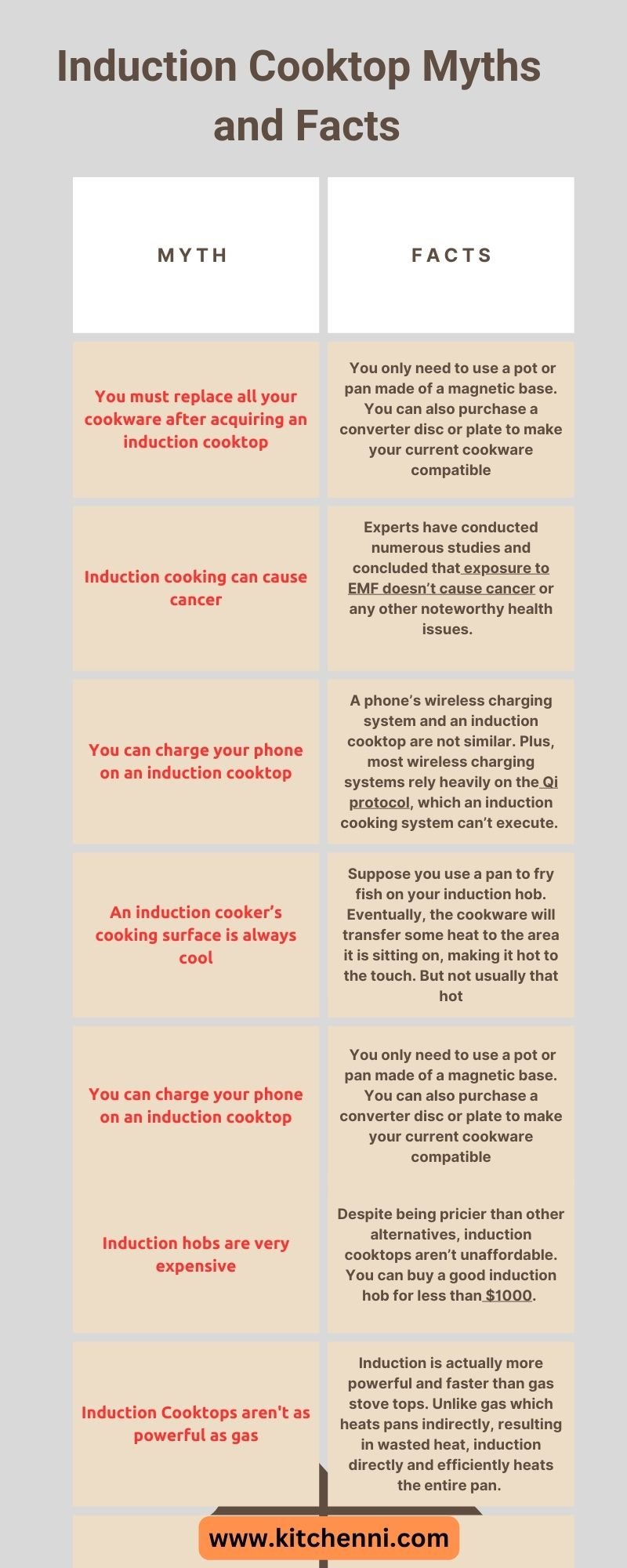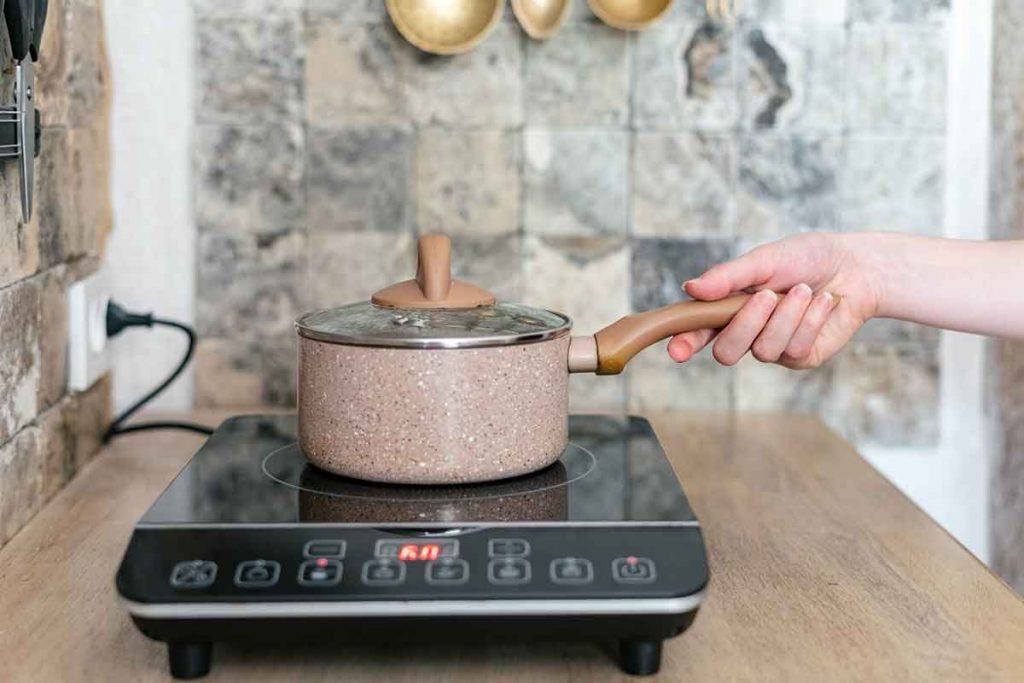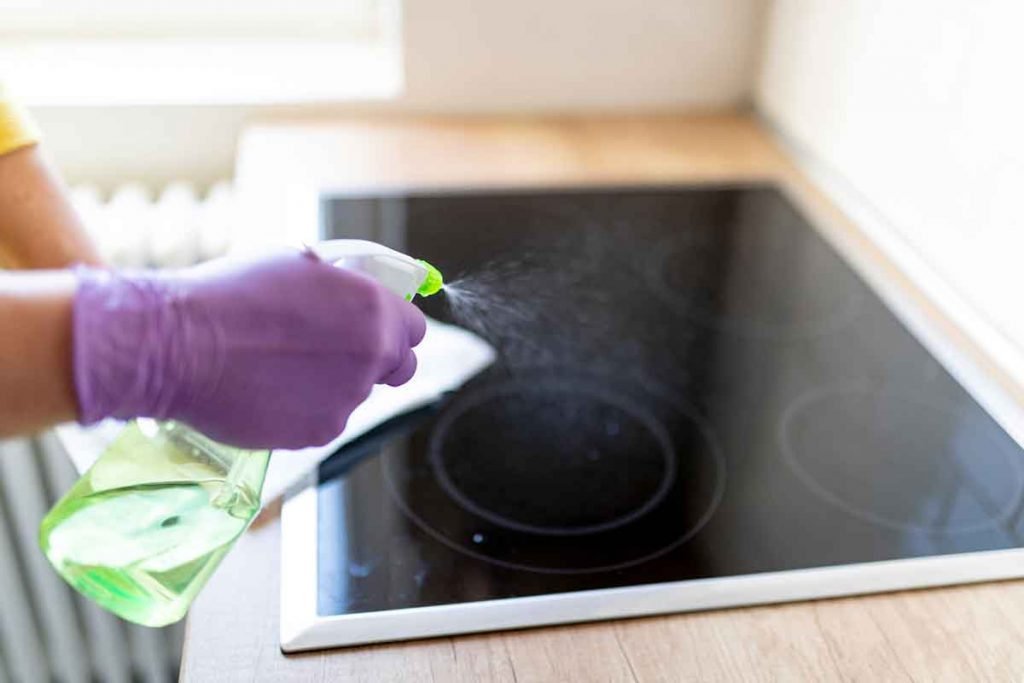What’s the craziest thing you’ve ever heard about induction cooktops? I’ll go first. I once read somewhere that you can use one of these appliances to charge your phone. Well, I tried it, and the results weren’t pretty. I’ve shared my experience below.
Also, a few years ago, a family member told me that induction hobs cause cancer. I have to admit, that shook me up. I even stopped using my cooktop for some time for a good reason. A few days prior, I discovered that the National Cancer Institute expects around 609,820 people to die of cancer in 2023 in the US alone, and I didn’t want to be a statistic.
But all these were myths, which are common. Having fallen for a few of them, I wouldn’t want you to do the same. That is why I’ve decided to help you debunk the most common myths surrounding induction cooking appliances.
8 Common Induction Cooktop Myths and Facts
Below, I’ve debunked some of the most common myths regarding induction cooking appliances.
Induction Cooktop Myths and Facts Infographic
Myth 1: You Must Replace all Your Cookware After Acquiring an Induction Cooktop
Some people believe you must ditch all your old cookware and get special pots and pans after buying an induction cooktop. And that is understandable. After all, these appliances work with induction-compatible cookware exclusively. I found that out the hard way.
I bought my induction hob a couple of years ago, and admittedly, I was still green. To my utter surprise and much disappointment, the appliance refused to cook food whenever I used any copper or aluminum pots and pans, which I had in plenty back then.
Truth
You don’t have to replace all your cookware after buying an induction hob because induction cooking doesn’t require “special” cookware. You only need to use a pot or pan made of a magnetic base. That is because induction cooking appliances generate heat through magnetic fields. So, if you have cookware made of a magnetic material like stainless steel or cast iron, it will work seamlessly with an induction stove.
You only need to use a pot or pan made of a magnetic base. You can also purchase a converter disc or plate to make your current cookware compatible.
You can use a magnet test to check which of your pots and pans are induction-ready.
Myth 2: Induction Cooking Can Cause Cancer
In a world where 95% of individuals have one or more health issues, people can be a little panicky. That is why you often hear of crazy conspiracies like COVID-19 was a bioweapon used to reduce the world’s population or induction cooktops cause cancer.
I can’t comment on the COVID-19 issue, but I can assure you that induction cooktops are pretty safe. So far, researchers have yet to find anything that suggests that these appliances cause life-threatening health issues.
Truth
True, induction cookers use electromagnetic fields to heat cookware. And, as you may have heard from innumerable conspiracy theorists, EMFs cause cancer. But that is 100% false. Experts have conducted numerous studies and concluded that exposure to EMF doesn’t cause cancer or any other noteworthy health issues.
Myth 3: You Can Charge Your Phone on an Induction Cooktop
This makes me smile a little. A few years ago, I came across an article that claimed to be enlightening. Here’s what it suggested. Since induction hobs and wireless charging are based on electromagnetic induction, you can use your cooktop to charge your phone using a wireless charging system! Amazing, right?
Well, I like experimenting and trying new stuff. So, I tried to charge my phone with my relatively new induction stove. At first, nothing happened. But I kept trying and only stopped when the battery incurred damage and became so swollen I was afraid it’d explode. Oops.
Truth
You can’t charge your phone using an induction cooktop. That is because a phone’s wireless charging system and an induction cooktop are not similar.
For instance, the coils in induction cooktops are significantly larger than the components used by their counterparts. Plus, most wireless charging systems rely heavily on the Qi protocol, which an induction cooking system can’t execute.
Myth 4: An Induction Cooker’s Cooking Surface is Always Cool
Have you ever unknowingly touched a conventional appliance like a gas range after cooking for a few hours? If you have, chances are high that you got mildly or even severely burnt, and you’re not alone.
According to statistics, approximately 486,000 burn injuries occur annually in the US alone. And, dollars to donuts, a good chunk of these incidents are caused by cooking appliances.
That said, some believe you won’t get burnt if you touch an induction cooker after cooking with it. That’s true to some extent. After all, induction stoves only transfer heat to the cookware and don’t rely on open flames. But, after using your appliance for an extended period, touching its cooking surface is a bad idea.
Truth
An induction cooktop’s cooking surface can get hot. How, you wonder? Suppose you use a pan to fry fish on your induction hob.
Eventually, the cookware will transfer some heat to the area it is sitting on, making it hot to the touch. That is why you should give your appliance a few minutes to cool down after using it before touching or cleaning its glass top.
Myth 5: Induction Hobs Are Very Expensive
Admittedly, induction hobs are often pricier than conventional appliances. And high-end cooktops have a significantly steep price tag. But they deserve it. After all, the best induction ranges are made of quality materials like glass ceramic. On the other hand, most traditional appliances, like gas stoves, often have tempered glass surfaces.
Also, induction cooktops are often pricier than their counterparts because they rely on a relatively new, next-level technology.
Truth
Despite being pricier than other alternatives, induction cooktops aren’t unaffordable. You can buy a good induction hob for less than $1000. But better products can cost more, with some requiring you to dish out up to $9,000. In short, there’s something for everyone.
Myth 6: Induction Cooktops Aren’t as Powerful as Gas
There is a misconception that no electronic or magnetic heat source could match the brute, intense power of combusting and containing natural gas flames. Some even believe the lack of actual fire on induction means less heat energy generation overall. Many assume the flaming burners visibly demonstrate far greater power potential than invisible magnetic fields under glass.
Truth
Induction is actually more powerful and faster than gas stove tops. Unlike gas which heats pans indirectly, resulting in wasted heat, induction directly and efficiently heats the entire pan. This allows induction to utilize 85-95% of generated heat, versus only 35-65% for gas. And there’s more!
Induction cooking is significantly faster with instant temperature adjustments and precision. The myth that gas is more powerful comes from the misconception that open flames must be stronger than a flat panel.
But induction technology disproves this, delivering more concentrated power for lightning-fast cooking right into the pan, not the air. Induction wins on cooking power and speed hands down.
Myth 7: Induction Can’t Properly Sear Meat or Stir-fry in a Wok.
Many believe that the concentrated open flame heat of gas burners is required to properly sear meats and char-fry in a wok at intense high temperatures. There is a perception that induction’s contained magnetic fields cannot deliver the 500°F+ heat needed for perfect sear marks on steaks or smoking hot wok stir-fries.
Some assume induction’s smooth, flat surface lacks the brute power to match the combustion heat of the gas. Many, also, falsely think induction will cook more slowly at high temperatures and fail to create that perfect char.
Truth
Induction is perfectly capable of delivering high heat for searing steaks, burgers, or stir-frying. It can reach temperatures as high as commercial gas stove burners.
Cast iron or carbon steel pans will work best for sear and wok cooking. Because of the immediate heat response, you may need to adjust your timing and technique slightly at first. But once you get the hang of it, you’ll have no issue achieving charred sear marks or smoky stir-fry dishes.
Here is an edited version integrating the additional facts about the strength testing of induction glass tops:
Myth 8: Glass Tops Are Not Very Strong
There is a common perception that the sleek glass-ceramic surface of induction cooktops seems too delicate and vulnerable compared to hardy gas or electric coil burners. Many assume that smooth and shiny glass material without visible heating elements simply cannot withstand the wear and tear of daily cooking.
There are fears that pots and pans may easily scratch or shatter the glass. There is also a myth that glass cannot handle high heat, and could crack or break with temperature changes.
Truth
The glass-ceramic material used for induction cooktops is extremely durable, resilient, and resistant to scratches, stains, and high heat. In fact, it is 3-4 times stronger than alternatives like stainless steel.
The glass is designed specifically to withstand heavy pots/pans, high cooking temperatures, and rapid heating or cooling. Spills wipe clean without staining. The glass material is rigid and scratch-resistant. To prove its strength, induction glass tops must pass stringent tests where they withstand the impact of a 1.2-pound steel ball dropped from 21 inches, and a 4-pound pan dropped 10 times from 8 inches.
Ceramic glass is used rather than tempered glass, as it does not bow at high temps after prolonged heating. With proper care, the smooth surface maintains its sleek look for years of cooking. It does not crack under high heat and can handle extreme temperature shifts or impacts. Rest assured, the glass tops used for induction are very tough and built to last.
Key Takeaways
There you go, the 8 common myths associated with induction cooktops. I’ve told you why they are nothing but myths and misconceptions. So, if you believed anything listed here, now you know the truth.
But the myths surrounding these appliances aren’t limited to what I’ve discussed here. Many others are circulating out there. To be safer, always research after hearing something, especially if it sounds quirky. If you don’t do some digging, you might throw away a pretty expensive appliance for the wrong reasons.




